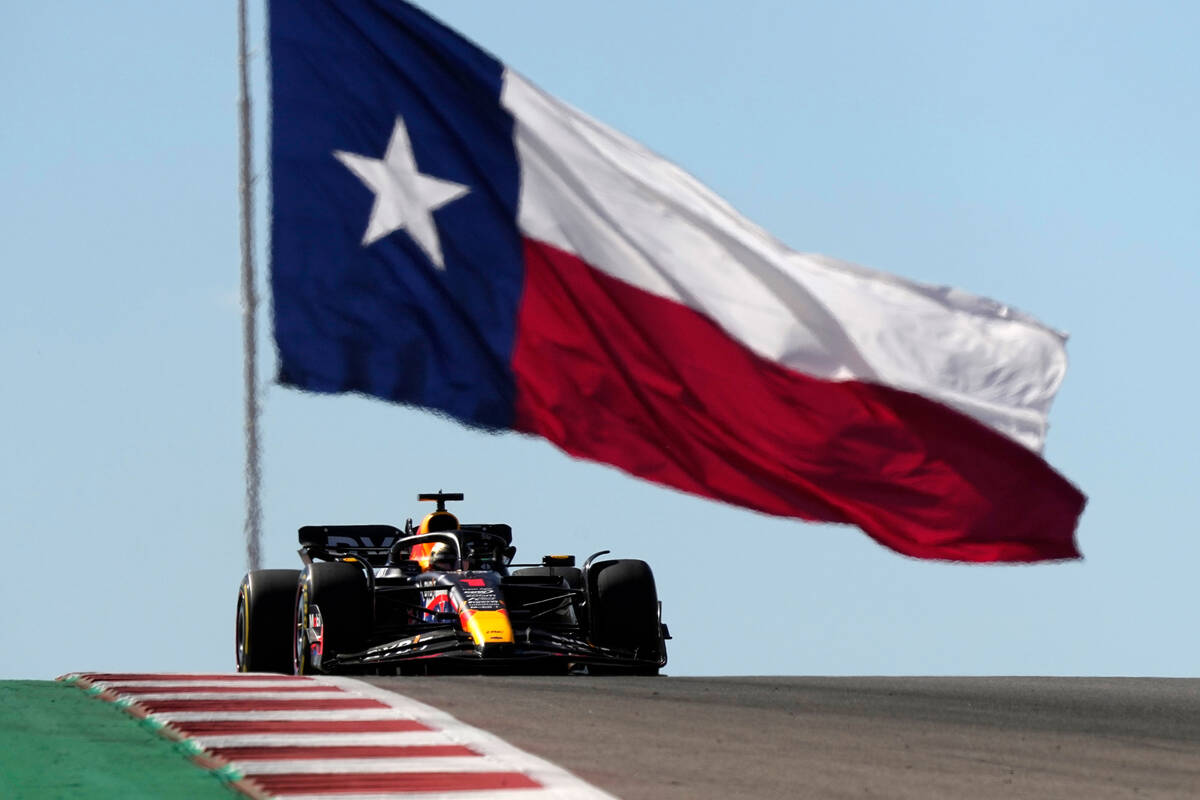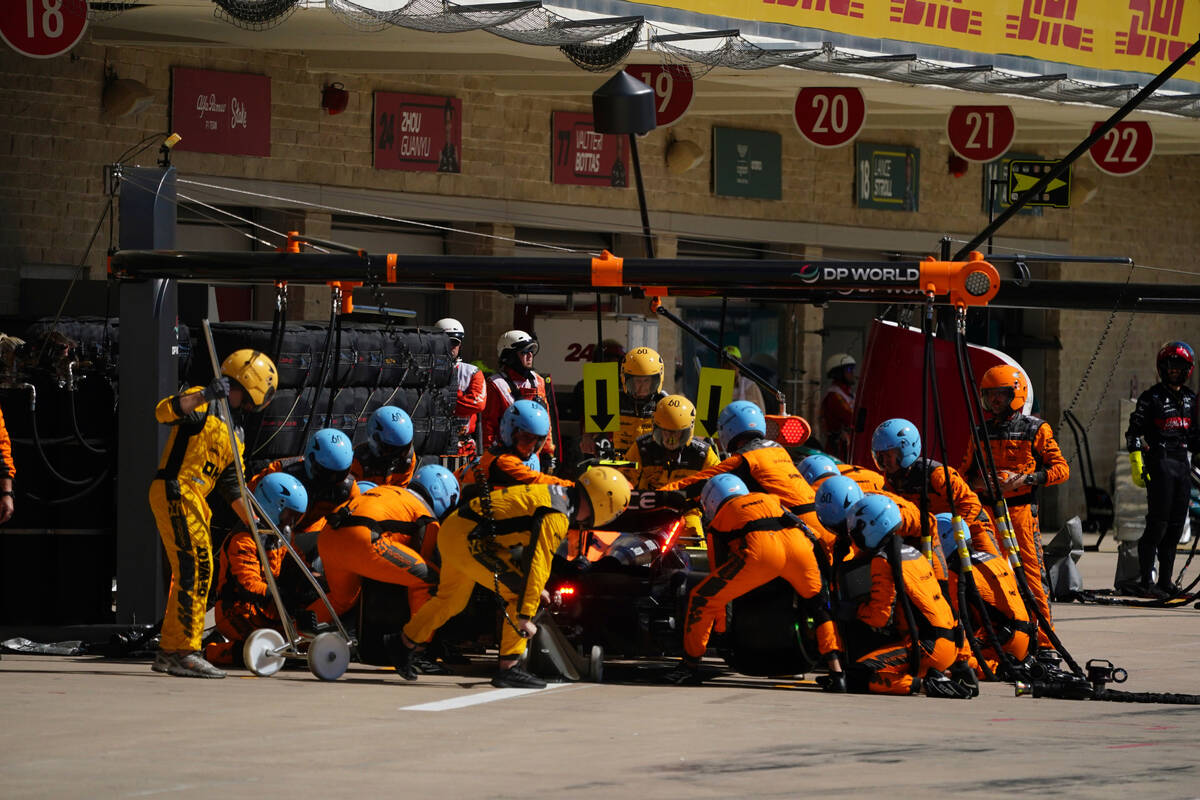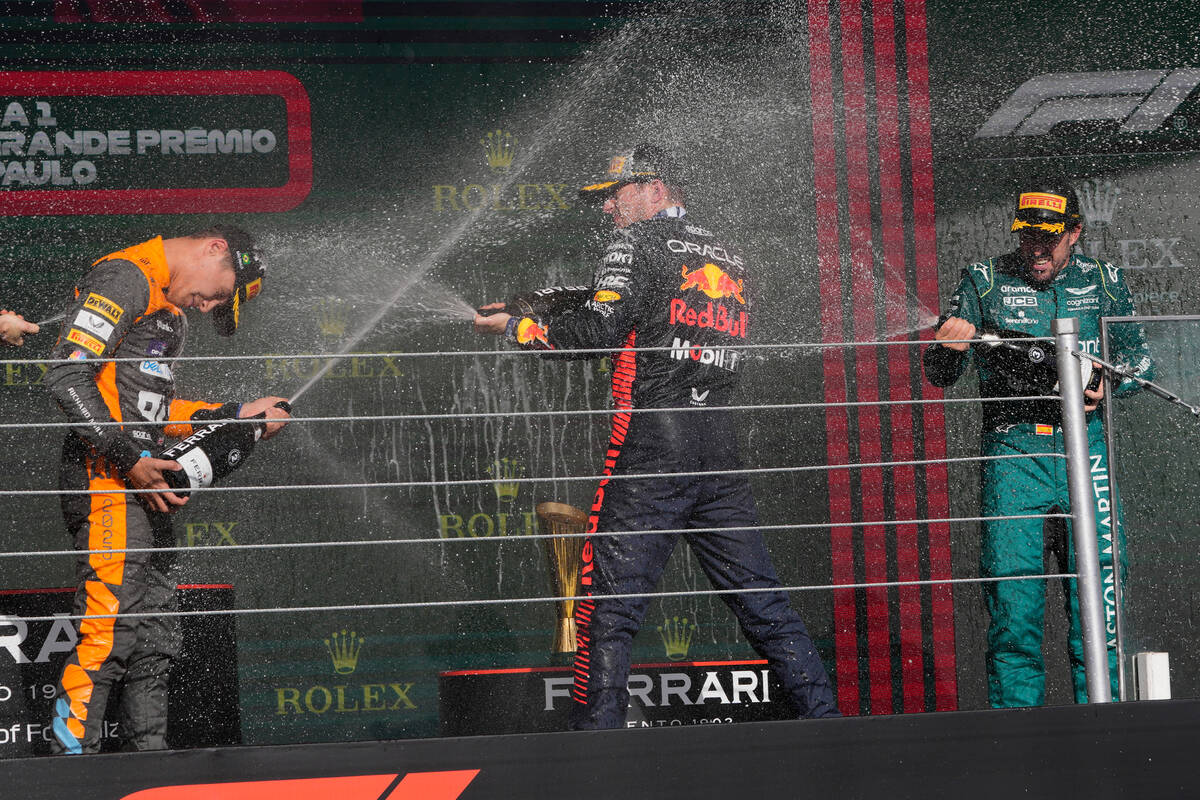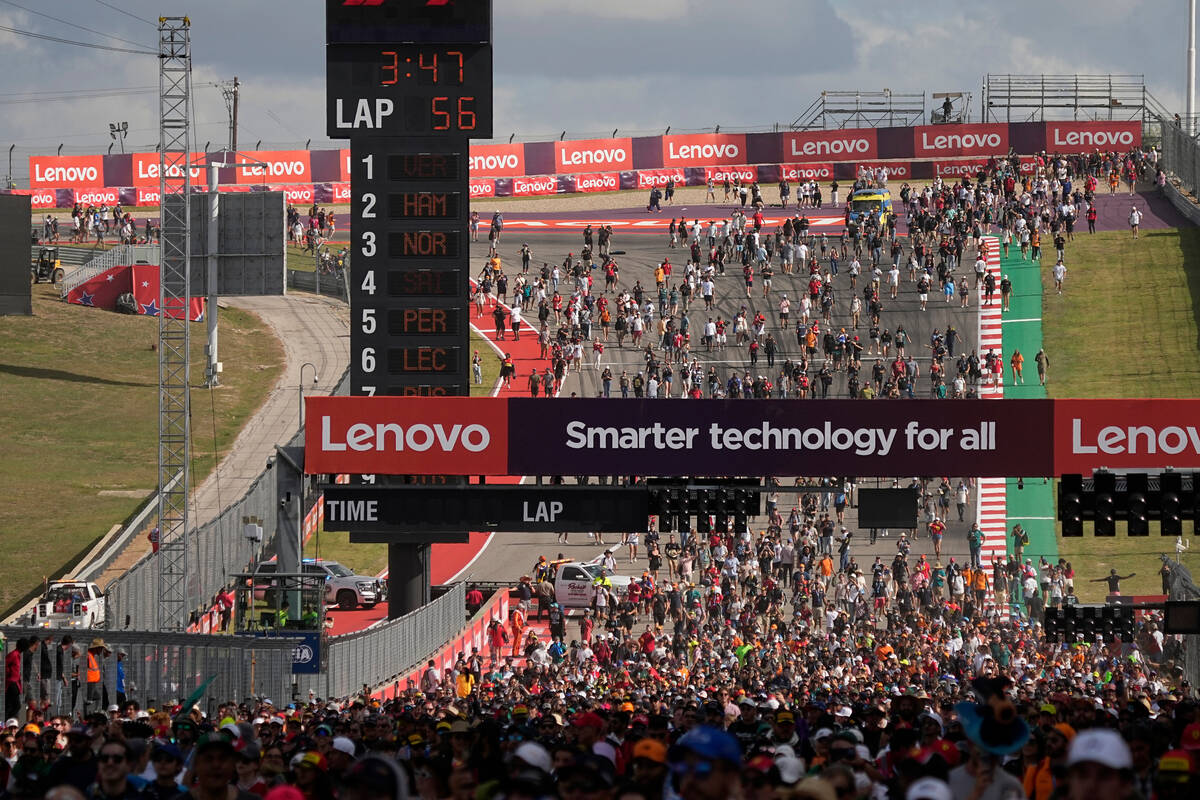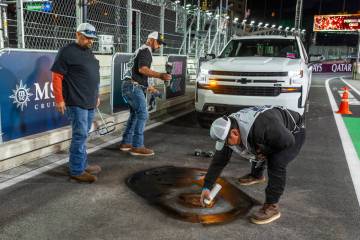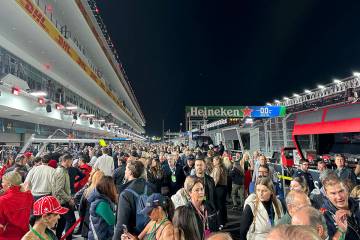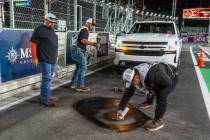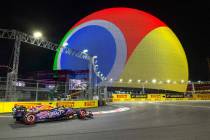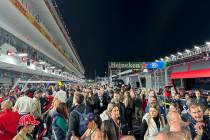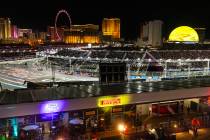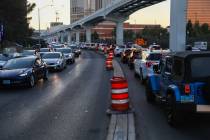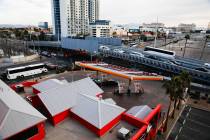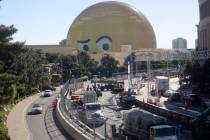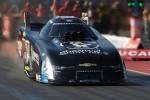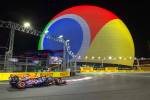F1 FAQ: Everything you need to know about Formula One racing
Formula One returns to Las Vegas this week for the first time in more than four decades.
Often referred to as the pinnacle of motor sports, F1 features 20 of the best drivers in the world competing with some of the fastest machinery known to man through some of the world’s most recognizable cities.
But how does the sport work, and why has it captivated so many fans around the world?
Here are some answers to the most frequently asked questions about Formula One:
What is Formula One?
Formula One is the highest level of open-wheel single-seater formula car racing in the world. Formula refers to the technological specifications laid out by the Federation Internationale de l’Automobile, F1’s governing body, to the teams as they build their cars.
This is the 74th season of Forumla One. The series debuted in 1950, when Italian driver Giuseppe Farina and his Alfa Romeo won the World Drivers’ Championship by three points ahead of his teammate Juan Manuel Fangio.
The first season of F1 had seven races, and four of the tracks — Silverstone Circuit in England, the Monaco Circuit in the Monte Carlo neighborhood of Monaco, Spa-Francorchamps Circuit in Belgium and the Monza Autodrome in Italy — are still part of the Formula One calendar to this day.
Who competes in Formula One?
There are 20 drivers, two each on 10 teams.
The teams include traditional car manufacturers like Ferrari, Mercedes, McLaren, Aston Martin, Alpine (formerly Renault) and Alfa Romeo. Other teams include Williams — one of the most storied teams in the series’ history — Red Bull and its sister team, AlphaTauri, and Haas, the lone American-based team.
While the drivers compete individually for the World Drivers’ Championship, the teams compete for the World Constructors’ Championship, whose final standings determine how much money each team wins at the end of the season.
How many laps in the Las Vegas Grand Prix?
There will be 50 laps around the 3.85-mile track, which includes 17 corners. The race will start in the Las Vegas Grand Prix pit building near the corner of Harmon Avenue and Koval Lane.
How many races are on the yearly Formula One schedule?
This season, F1 was scheduled to have 23 races. However, the Emilia Romagna Grand Prix was canceled due to flooding in May.
The Las Vegas Grand Prix is the penultimate race, and F1 will then head to Abu Dhabi to complete the 2023 campaign at the Yas Marina Circuit.
How many Formula One races are held in the U.S. each year?
It has varied by season, but the growth of F1 interest in the U.S., coupled with the 2017 purchase of the Formula One Group by American company Liberty Media, has meant more races in the U.S.
The Las Vegas Grand Prix will be the third race in the U.S. this season. The Miami Grand Prix, held around the Miami Dolphins’ Hard Rock Stadium, ran for the second time this year, while the United States Grand Prix was held at the Circuit of the Americas in Austin, Texas. Red Bull’s Max Verstappen won both races.
Italy is the only other country that hosts multiple races per season. The Emilia Romagna Grand Prix is held at the Imola Circuit, while the Italian Grand Prix runs at the Monza Autodrome.
How does scoring work?
Drivers are awarded points based on the results of each race. The top 10 finishers all score, with the winner earning 25 points, second place making 18 and so on down to 10th place, which earns one point. Additionally, whichever driver claims the fastest lap of the race earns an extra point as long as he finishes the race in a scoring position.
These points go toward both the drivers’ and the constructors’ standings.
Verstappen has already clinched a third straight drivers’ title.
Are all the cars the same?
No. Unlike IndyCar, which is nearly a specification series with each team running fairly similar cars, Formula One teams are required to design their own cars within certain technological specifications provided by the FIA.
Additionally, each team is now mandated to follow a cost cap, or a certain amount of money they can spend developing and producing their cars. This year’s cost cap is set at $135 million.
However, one place where teams have fewer options are the engines, now called power units because they are hybrids, consisting of internal combustion engines and electric motors. The power unit’s total output is around 1,000 brake horsepower, meaning Formula One cars regularly reach more than 200 mph.
There are just four power unit manufacturers. Mercedes supplies itself, Aston Martin, McLaren and Williams. Ferrari provides power units for Alfa Romeo, Haas and itself. Honda Red Bull Powertrains build power units for Red Bull and AlphaTauri, and Renault makes the power units for Alpine.
How fast are Formula One cars?
It depends. Stripped-down Formula One cars have topped out at around 250 mph, but what makes an F1 car fast is its ability to navigate tight corners at high speeds because of the downforce it can generate. Alpine’s Pierre Gasly was recorded at a little over 209 mph in the speed trap during the Sao Paulo Grand Prix sprint shootout Nov. 4 to lead all drivers. He finished in 13th place.
Additionally, there are two zones in the Las Vegas Grand Prix where drivers are allowed to activate their drag reduction systems, which help add 6 to 7.5 mph. The first is the straight after Turn 4 entering Turn 5, and the second is down Las Vegas Boulevard after Turn 13 entering Turn 14.
Drivers can only activate their DRS to help them pass if they are less than a second behind another car.
How many pit stops are there?
Teams are required to make at least one pit stop because they have to use at least two tire compounds per race, assuming it doesn’t rain. There are five classifications of F1 tires, but only three are brought per race.
Soft tires (red) are the quickest, but suffer tire degradation at the highest rate. Hard tires (white) last the longest but don’t have as much grip, while mediums (yellow) are in between. Teams also have wet tires (blue) and intermediate tires (green), which aren’t counted among the five classifications.
A good pit stop is expected to take less than three seconds, and will cost a driver around 20 seconds of race time without an active safety car.
While cars have to make at least one pit stop, they do not fill up gas. Tire changes and fixing damage on a car are the only alterations allowed at a pit stop, as one tank of gas is expected to get the car from start to finish.
How is the starting order determined?
The starting order, also called the grid, is set during qualification, which happens in three phases the day before the race. Q1 involves all 20 drivers, with the five who post the slowest lap times eliminated and set on the grid as starting positions 20 through 16. Five more drivers are knocked out at the end of Q2 to make up positions 15 through 11.
Q3 determines the order of the top 10 drivers. Whoever has the fastest lap at the end of Q3 starts the race in pole position.
How much money do drivers make?
Forbes reported Verstappen made $60 million to make him the highest-paid F1 driver in 2022. Seven-time world champion Lewis Hamilton — a minority owner of the Denver Broncos — reportedly earned $55 million at Mercedes during the 2022 season.
That’s slightly more than Golden State Warriors guard Stephen Curry, the highest-paid player in the NBA, is expected to make this season and equal quarterback Joe Burrow’s yearly salary after signing his new deal with the NFL’s Cincinnati Bengals.
Verstappen and Hamilton are the biggest earners in F1, but for more context, Hamilton’s teammate George Russell reportedly made $10 million in 2022, ranking 10th among the 20 drivers.
How much is the purse for the Las Vegas Grand Prix?
There are no individual purses for winning an F1 race. The money comes at the end from each team’s place in the World Constructors’ Championship, so the points won at the Las Vegas Grand Prix will go toward determining the final standings. Drivers are paid via contracts they sign with their teams, but may have performance bonuses.
While Red Bull clinched first in the constructors’ championship months ago, Mercedes leads Ferrari for second by just 20 points, which can be the difference between millions of dollars. Aston Martin similarly trails McLaren by 21 points for fourth place, so there’s still a lot on the line even though the drivers’ and constructors’ champions have long been determined.
Is this the first Formula One race in Las Vegas?
No. Las Vegas has hosted two previous Formula One races in 1981 and 1982, called the Caesars Palace Grand Prix. Australian Alan Jones, driving a Williams, was the first winner, while Italian Michele Alboreto took the top step of the podium with his Tyrrell in 1982.
The 1981 and 1982 World Drivers’ Championships were decided at the Caesars Palace Grand Prix. Brazilian driver Nelson Piquet clinched the 1981 title by finishing fifth ahead of Argentine Carlos Reutemann, who was eighth despite starting in pole position. A year later, Finnish driver Keke Rosberg of Williams finished fifth to clinch his lone drivers’ championship.
Formula One left Caesars Palace following the 1982 race. The circuit was built in the casino’s parking lot, which exposed drivers to intense heat and went in a counter-clockwise direction that strained drivers’ necks. IndyCar took over the race for two more years, but departed after 1984.
Who are the most famous F1 drivers?
Formula One has witnessed some of the greatest drivers the world has ever seen. Juan Manuel Fangio, Alberto Ascari, Jack Brabham and Stirling Moss dominated the series’ early history during the 1950s.
English drivers Jim Clark and Jackie Stewart led Formula One through the next decade, while the rivalry between Niki Lauda and James Hunt — the basis for the 2013 movie “Rush” — flared up in the 1970s ahead of American Mario Andretti’s lone drivers’ championship in 1978.
The late 1980s featured another famous F1 rivalry between Alain Prost and Ayrton Senna, before the latter’s tragic death in 1994. Michael Schumacher began his rise to prominence in the mid-1990s before winning five consecutive drivers’ championships in the early 2000s with Ferrari. Fernando Alonso ended Schumacher’s reign by winning back-to-back titles in 2005 and 2006.
Since 2010, three drivers — Sebastian Vettel, Lewis Hamilton and Max Verstappen — have won 13 of the 14 drivers’ championships.
What are the major differences between open-wheel racing like Formula One and NASCAR?
Essentially, it comes down to car design. Open-wheel cars like Formula One or IndyCar refer to the exposed wheels away from the body of the vehicle. NASCAR, in comparison, uses a closed-wheel car where the wheels are under the body covered by fenders, which is more similar to the types of cars people drive in everyday life.
Open-wheel cars are generally single-seaters, too, while closed-wheel cars can carry a passenger.
Formula One cars are significantly lighter than NASCAR stock cars, which makes them faster. Additionally, F1 cars are built to race on winding courses featuring tight turns at high speeds, while NASCAR generally races on ovals, so they’re built with different objectives in mind.
Contact reporter Andy Yamashita at ayamashita@reviewjournal.com. Follow @ANYamashita on X.



